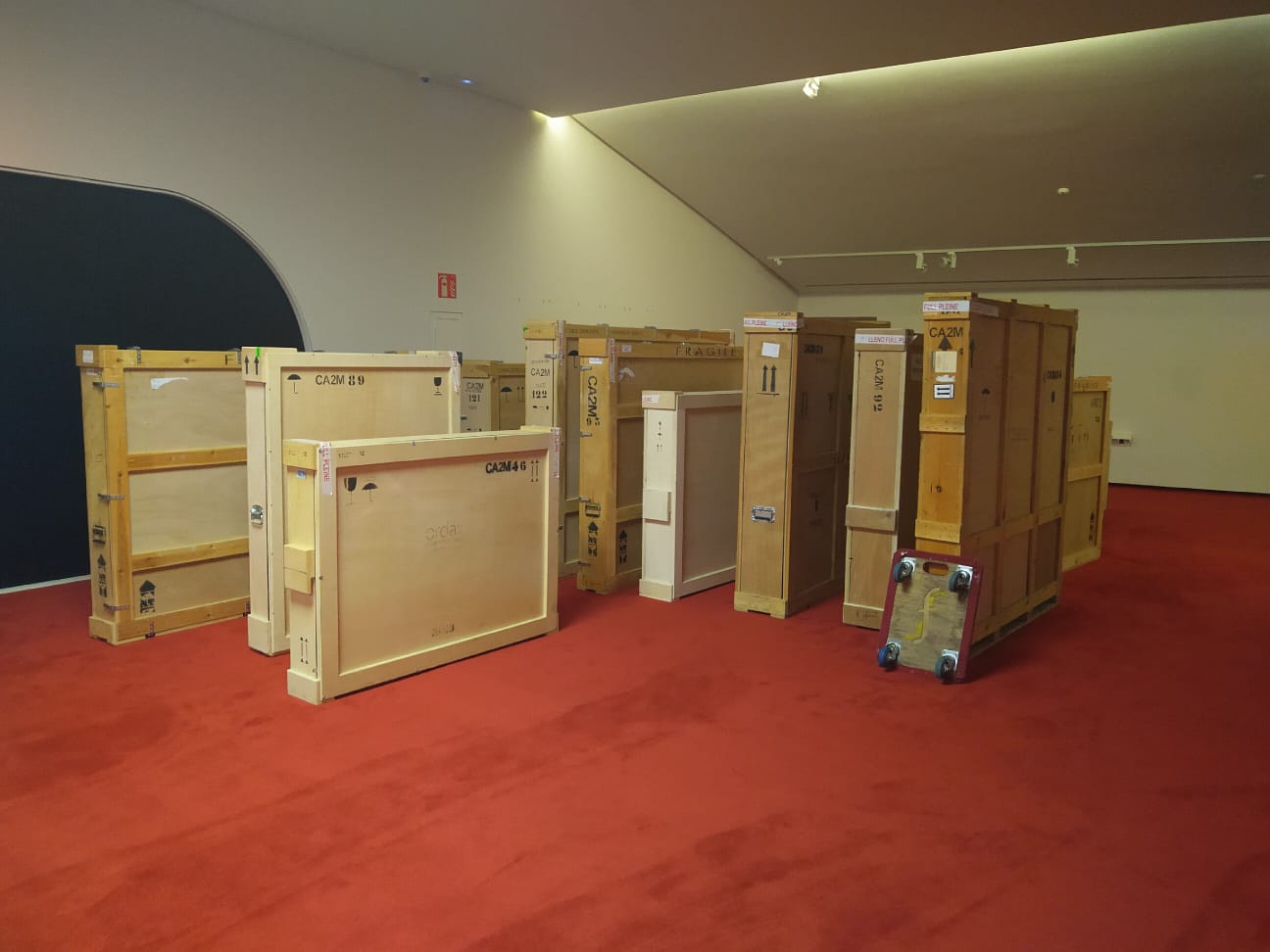TRANSPORT AND EXHIBITIONS

The transportation of artworks is one of the most important aspects of preventive conservation. This intermediate step between the loan leaving its usual place and its installation in another location is essential to its conservation, as much deterioration occurs at this point: movements, vibrations, changes in temperature, fluctuation in humidity, etc. The way this is managed is essential in order to minimise all these factors.
This process must include: all the required pre-prepared documentation; a plan of the entire moving process; any necessary auxiliary equipment (special lifting machinery, carts or dollies, straps), the kind of packing materials to be used; the control and security measures (couriers, guards, etc.).
The materials that make up the artwork and its finish are what determine how it will be correctly packaged and what protective materials will be used. Each piece is unique in shape and structure and must be treated accordingly.
At the CA2M we believe it is essential to transport artworks in wooden crates, and sometimes in metal ones. These must be conditioned against vibrations and temperature fluctuations, immobilised inside by using Plastazote® or foam reinforcement. External signage must state any danger, fragility, which way up it must is must be transported and opened, and must also be securely sealed. The crate must not feature any information or photographs of its contents.
We take particular care when it comes to small or fragile artworks. These are packed using special conservation materials, crates and/or folders made of neutral cardboard; this ensures they are perfectly preserved while in our storage area, and when they need to be transported, they are placed in reusable wooden boxes. Avoiding the need to make new wooden crates, except when strictly necessary, helps alleviate the matter of storage as a lack of space tends to be a problem in museums.
Items should always be treated individually before being subjected to group treatment as it is essential to know what types of materials and companies we work with. In this regard, the sector is very professional; top-quality materials for preventive conservation are used, and the companies we employ are specialised in handling of works of art.